| Listing 1 - 9 of 9 |
Sort by
|
Book
ISBN: 9535150006 9535105868 Year: 2012 Publisher: IntechOpen
Abstract | Keywords | Export | Availability | Bookmark
 Loading...
Loading...Choose an application
- Reference Manager
- EndNote
- RefWorks (Direct export to RefWorks)
This book brings together the knowledge from a variety of topics within the field of geochemistry. The audience for this book consists of a multitude of scientists such as physicists, geologists, technologists, petroleum engineers, volcanologists, geochemists and government agencies. The topics represented facilitate as establishing a starting point for new ideas and further contributions. An effective management of geological and environmental issues requires the understanding of recent research in minerals, soil, ores, rocks, water, sediments. The use of geostatistical and geochemical methods relies heavily on the extraction of this book. The research presented was carried out by experts and is therefore highly recommended to scientists, under- and post-graduate students who want to gain knowledge about the recent developments in geochemistry and benefit from an enhanced understanding of the dynamics of the earth's system processes.
Geochemical modeling. --- Geochemical reaction modeling --- Modeling, Geochemical --- Reaction modeling, Geochemical --- Geological modeling --- Geochemistry
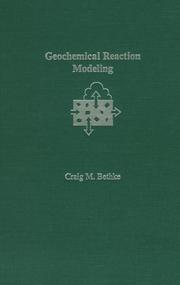
ISBN: 0197560776 1280451009 9786610451005 1423729293 0198025505 1602560323 9781423729297 9781602560321 9781280451003 9780195094756 0195094751 0195094751 Year: 1996 Publisher: New York : Oxford University Press,
Abstract | Keywords | Export | Availability | Bookmark
 Loading...
Loading...Choose an application
- Reference Manager
- EndNote
- RefWorks (Direct export to RefWorks)
Geochemical reaction modeling plays an increasingly vital role in several areas of geoscience, from environmental geochemistry and petroleum geology to the study of geothermal and hydrothermal fluids. This book provides an up-to-date overview of the use of numerical methods to model reaction processes in the Earth's crust and on its surface.
Geochemical modeling. --- Chemical reactions --- Reactions, Chemical --- Chemical processes --- Geochemical reaction modeling --- Modeling, Geochemical --- Reaction modeling, Geochemical --- Geological modeling --- Simulation methods.
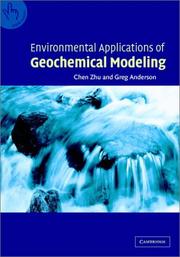
ISBN: 0511157282 0511606273 0511020023 9780511020025 052180907X 9780521809078 0521005779 9780521005777 9780511157288 9780511606274 052180507X Year: 2002 Publisher: Cambridge Cambridge University Press
Abstract | Keywords | Export | Availability | Bookmark
 Loading...
Loading...Choose an application
- Reference Manager
- EndNote
- RefWorks (Direct export to RefWorks)
Geochemical modeling is a powerful tool for characterizing environmental site contaminations and predicting environmental impacts. This book discusses the application of geochemical models to environmental practice and studies, through the use of numerous case studies of real-world environmental problems, such as acid mine drainage, pit lake chemistry, nuclear waste disposal, and landfill leachates. In each example the authors clearly define the environmental threat in question; explain how geochemical modeling may help solve the problem posed; and advise the reader how to prepare input files for geochemical modeling codes and interpret the results in terms of meeting regulatory requirements. Support material for the book, including program codes, input files and exercise problems, is available on the Internet. Environmental Applications of Geochemical Modeling will serve as an advanced textbook for courses in environmental geochemistry, and as an indispensable reference for professional hydrogeologists, geochemists, engineers, and regulators, working within the environmental spheres.
Periodical

ISSN: 19422466
Abstract | Keywords | Export | Availability | Bookmark
 Loading...
Loading...Choose an application
- Reference Manager
- EndNote
- RefWorks (Direct export to RefWorks)
"JAMES publishes research related to a wide range of problems in climate science, including atmospheric and oceanic circulations on multiple scales, radiation, cloud physics, boundary layer and land surface processes, the biosphere and cryosphere, biogeochemical cycles, and the development of numerical methods, model parameterizations, and data assimilation methods for Earth systems modeling. JAMES promotes interdisciplinary research, disseminates information to the global community, and informs the general public and decision makers of the science behind climate and Earth systems modeling."
Geological modeling --- Climatology --- Geochemical modeling --- Climatology. --- Geochemical modeling. --- Geological modeling. --- Geochemical reaction modeling --- Modeling, Geochemical --- Reaction modeling, Geochemical --- Modeling, Geological --- Models and modelmaking --- Climate --- Climate science --- Climate sciences --- Science of climate --- Atmospheric science --- Hydrobiology --- Physical geography --- earth systems modelling
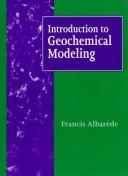
ISBN: 0521454514 0521578043 9780521454513 9780521578042 9780511622960 Year: 1995 Publisher: Cambridge Cambridge University Press
Abstract | Keywords | Export | Availability | Bookmark
 Loading...
Loading...Choose an application
- Reference Manager
- EndNote
- RefWorks (Direct export to RefWorks)
Geochemical modeling --- 519.24 --- 550.4 --- Geochemical reaction modeling --- Modeling, Geochemical --- Reaction modeling, Geochemical --- Geological modeling --- 519.24 Special statistical applications and models --- Special statistical applications and models --- 550.4 Geochemistry --- Geochemistry --- Geochemical modeling. --- MATHEMATICAL MODELS --- GEOCHEMISTRY --- Monograph --- Mathematical models. --- Geochemistry. --- Chemical composition of the earth --- Chemical geology --- Geological chemistry --- Geology, Chemical --- Chemistry --- Earth sciences --- Models, Mathematical --- Simulation methods
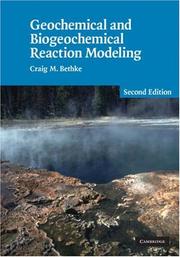
ISBN: 9780521875547 9780511619670 9780521155700 9780511378973 0511378971 0511619677 0521875544 1107182182 9781107182189 1281243515 9781281243515 9786611243517 6611243518 0511378084 9780511378089 0511377207 9780511377204 0511374739 9780511374739 051137626X Year: 2008 Publisher: Cambridge Cambridge University Press
Abstract | Keywords | Export | Availability | Bookmark
 Loading...
Loading...Choose an application
- Reference Manager
- EndNote
- RefWorks (Direct export to RefWorks)
This book provides a comprehensive overview of reaction processes in the Earth's crust and on its surface, both in the laboratory and in the field. A clear exposition of the underlying equations and calculation techniques is balanced by a large number of fully worked examples. The book uses The Geochemist's Workbench® modeling software, developed by the author and already installed at over 1000 universities and research facilities worldwide. Since publication of the first edition, the field of reaction modeling has continued to grow and find increasingly broad application. In particular, the description of microbial activity, surface chemistry, and redox chemistry within reaction models has become broader and more rigorous. These areas are covered in detail in this new edition, which was originally published in 2007. This text is written for graduate students and academic researchers in the fields of geochemistry, environmental engineering, contaminant hydrology, geomicrobiology, and numerical modeling.
Chemical reactions --- Geochemical modeling --- 544.43 --- 550.47 --- 550.4 --- Geochemical reaction modeling --- Modeling, Geochemical --- Reaction modeling, Geochemical --- Geological modeling --- Reactions, Chemical --- Chemical processes --- 550.4 Geochemistry --- Geochemistry --- 550.47 Biogeochemistry --- Biogeochemistry --- Simulation methods --- Mechanism of chemical reactions --- Geochemical modeling. --- Simulation methods.
Book
ISBN: 1523112816 0873354613 9781523112814 9780873354615 9780873353533 Year: 2017 Publisher: Englewood, Colorado : Society for Mining, Metallurgy & Exploration,
Abstract | Keywords | Export | Availability | Bookmark
 Loading...
Loading...Choose an application
- Reference Manager
- EndNote
- RefWorks (Direct export to RefWorks)
Abandoned mined lands reclamation. --- Mine drainage. --- Mine water. --- Geochemical modeling. --- Geochemical reaction modeling --- Modeling, Geochemical --- Reaction modeling, Geochemical --- Geological modeling --- Water in mines --- Groundwater --- Drainage --- Mined land reclamation --- Mining sites restoration --- Reclamation of abandoned mined lands --- Reclamation of mined land --- Restoration of mining sites --- Strip-mined land reclamation --- Surface-mined land reclamation --- Reclamation of land
Book
ISBN: 3662467917 3662467925 Year: 2016 Publisher: Berlin, Heidelberg : Springer Berlin Heidelberg : Imprint: Springer,
Abstract | Keywords | Export | Availability | Bookmark
 Loading...
Loading...Choose an application
- Reference Manager
- EndNote
- RefWorks (Direct export to RefWorks)
The aim of this book is to unlock the power of the freeware R language to advanced university students and researchers dealing with whole-rock geochemistry of (meta-) igneous rocks. The first part covers data input/output, calculation of commonly used indexes and plotting in R. The core of the book then focusses on the presentation and practical implementations of modelling techniques used for fingerprinting processes such as partial melting, fractional crystallization, binary mixing or AFC using major-, trace-element and radiogenic isotope data. The reader will be given a firm theoretical basis for forward/reverse modelling, followed by exercises dealing with typical problems likely to be encountered in real life, and their solutions using R. The concluding sections demonstrate, using practical examples, how a researcher can proceed in developing a realistic model simulating natural systems. The appendices outline the fundamentals of the R language and provide a quick introduction to the open-source R-package GCDkit for Interpretation of whole-rock geochemical data from igneous and metamorphic rocks.
Dynamic & Structural Geology --- Geology --- Earth & Environmental Sciences --- Geochemical modeling. --- Igneous rocks. --- R (Computer program language) --- GNU-S (Computer program language) --- Eruptive rocks --- Igneous petrology --- Igneous rocks --- Petrology, Igneous --- Rocks, Eruptive --- Rocks, Igneous --- Geochemical reaction modeling --- Modeling, Geochemical --- Reaction modeling, Geochemical --- Petrology --- Domain-specific programming languages --- Rocks --- Geological modeling --- Geochemistry. --- Computer simulation. --- Ecology. --- Simulation and Modeling. --- Geoecology/Natural Processes. --- Balance of nature --- Biology --- Bionomics --- Ecological processes --- Ecological science --- Ecological sciences --- Environment --- Environmental biology --- Oecology --- Environmental sciences --- Population biology --- Computer modeling --- Computer models --- Modeling, Computer --- Models, Computer --- Simulation, Computer --- Electromechanical analogies --- Mathematical models --- Simulation methods --- Model-integrated computing --- Chemical composition of the earth --- Chemical geology --- Geological chemistry --- Geology, Chemical --- Chemistry --- Earth sciences --- Ecology --- Geoecology. --- Environmental geology. --- Geoecology --- Environmental protection --- Physical geology --- R (Computer program language).
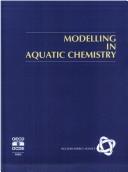
ISBN: 9264155694 Year: 1997 Publisher: Paris : [Washington, D.C. : Nuclear Energy Agency, Organisation for Economic Co-operation and Development ; Distributor, OECD Washington Center],
Abstract | Keywords | Export | Availability | Bookmark
 Loading...
Loading...Choose an application
- Reference Manager
- EndNote
- RefWorks (Direct export to RefWorks)
Thermodynamic data are important for the modelling of the chemical processes in the engineering part on nuclear waste repository systems (the "near-field" region), and also to describe the effect of the "far-field", i.e. how the chemical change in ground and surface water systems may affect the transport of toxic elements from the repository to the biosphere.This publication contains guidelines on how to use the NEA-recommended Thermochemical Database (TDB) values, and on procedures to estimate values for cases where none can be recommended based on published experimental work.This volume is of interest to anyone involved in modelling of aqueous systems, including scientists working in non-nuclear activities. Each subject is introduced in an elementary way, including simple examples, and prior expert knowledge in the various subjects is not required.The text contains the scientific background, and references, to the various subject areas, and is therefore a reference source also for the experts working with modelling of aquatic systems. Emphasis is given to the advantages and limitations of the various models described in the frame of a simplified systems discussion. Some of the chapters are intended as guidelines for the chemical equilibrium modelling of aquatic systems (for example, ionic strength and temperature corrections). Other chapters are intended to introduce the reader to non-equilibrium modelling: mass transfer between phases and transport of solutes in aquatic systems.Each chapter has been written independently by the author(s), while the co-ordination of the different subjects has been the task of the editors. A peer-review procedure has been followed to ensure the quality of the text.
Water chemistry --- Chemical reactions --- Thermodynamics. --- Transport theory. --- Geochemical modeling. --- Humic acid --- Ligand binding (Biochemistry) --- Speciation (Chemistry) --- Eau --- Réactions organiques (Chimie) --- Thermodynamique --- Transport, Théorie du --- Mathematical models. --- Reactivity --- Thermodynamics --- Chimie --- Modèles mathématiques --- Transport theory --- Geochemical modeling --- Radioactive wastes --- Modèles en géologie --- Acides humiques --- Ligands (biochimie) --- Déchets radioactifs --- Mathematical models --- Réactivité --- Fixation --- 543.3 --- 556.31 --- 547.992 --- #ABIB:acol --- Water sampling and analysis --- Properties of groundwater --- Humic acids. Lignin --- 547.992 Humic acids. Lignin --- 556.31 Properties of groundwater --- 543.3 Water sampling and analysis --- Aquatic chemistry --- Chemical hydrology --- Hydrochemistry --- Hydrogeochemistry --- Natural water chemistry --- Geochemistry --- Hydrology --- Boltzmann transport equation --- Transport phenomena --- Mathematical physics --- Particles (Nuclear physics) --- Radiation --- Statistical mechanics --- Chemistry, Physical and theoretical --- Dynamics --- Mechanics --- Physics --- Heat --- Heat-engines --- Quantum theory --- Biochemical speciation --- Chemical speciation --- Chemistry, Analytic --- Binding, Ligand (Biochemistry) --- Biochemistry --- Dye-ligand affinity chromatography --- Radioligand assay --- Organic acids --- Geochemical reaction modeling --- Modeling, Geochemical --- Reaction modeling, Geochemical --- Geological modeling --- Reactions, Chemical --- Chemical processes --- Reactivity&delete& --- Thermodynamics&delete& --- Thermodynamique. --- Transport, Théorie du. --- Modèles en géologie. --- Modèles mathématiques. --- Fixation. --- MODELING --- SILICATES --- MODELLING --- SOLUBILITY --- GROUND WATER --- Geological solids --- Aqautic sciences --- Human substances --- CHEMISTRY --- Monograph --- Modeling. --- Silicates. --- Solubility. --- Groundwater. --- Chemistry. --- Physical sciences --- Ground water --- Subterranean water --- Underground water --- Water, Underground --- Water --- Hydrogeology --- Solution (Chemistry) --- Oxygen compounds --- Silicon compounds --- Clay modeling --- Modelling --- Molding (Clay, plaster, etc.) --- Clay --- Sculpture --- Technique --- Analytical chemistry --- Théorie du transport. --- Théorie du transport. --- Modèles en géologie. --- Déchets radioactifs --- Modèles mathématiques. --- Réactivité
| Listing 1 - 9 of 9 |
Sort by
|

 Search
Search Feedback
Feedback About UniCat
About UniCat  Help
Help News
News